Blog →
The Changelog

Blog →


by
Luis Manjarrez
January 16, 2020
· Updated on
The changelog is one of the most visited pages on our website. It's visually appealing, informative, and recently a new way to distribute content to our users.
We are using it as a new marketing channel and you can too.
"Your changelog is one of the best I know because it's transparent, you can always see what's going on and see that the app keeps improving fast…"
Simon M.
For those who aren't familiar with the concept, a changelog is a tool used to announce changes to a project in a chronological order. Most websites out there with changelogs usually limit to technical updates for current users, but not us. We want ours to be a detailed timeline of our company's journey for new and existing users.
We're not reinventing the wheel here; we are only experimenting with this format of updating customers but with a twist, and we're sharing our experience with you.
Here are a few takeaways and a free goodie for you as well!
Try to keep it short, preferably with only one line of text. The tags (for example IMPROVEDBETANEW) immediately tell the user what the change is about, helping you to go straight to the point.

Sometimes notes are needed to complement the text. We opted for formatting them in smaller font size and different color.

If one line and note is not enough, add a read more link and bring the user to a separate in-depth article.

Without graphics, it's just a long list of boring text. Try adding images or short videos to enhance the content.
But you don't want to cover the changelog with images. Otherwise, it will become hard to read, losing its appeal.
We usually add images to make the content clearer. For example, if you see this:

You have no idea what this is about; you have no context. But when adding a zoomed-in screenshot, you immediately understand it all.

Traditional changelogs usually contain modifications to the software like new features, bug fixes, and improved functionality. But this is where you can be creative.
We weren't getting many views on our blog posts and we knew people liked the changelog page, so we added a BLOGtag to the changelog, and people started reading our posts more!

Other tags have been added recently as well. We hired a new employee, so we added a HIREDtag, and one of our users took the time to write an email, welcoming the new teammate!

It's an excellent alternative to the classic overused email newsletter. At the end of 2019, we sent a newsletter formatted as the changelog. It turned out to be a success. The email open-rate was good, our blog post views went up, and we even received encouraging messages to keep this going!

Yes! But how can you implement it? Well, there are many changelog SAAS that offer precisely this. Here are three great options:
Or you can build your own like us! It's a simple YAML file in our Rails app. Maybe we can do another blog post about it. Reach out if you would like that.
We hope your users enjoy this as much as ours did!

January 5, 2026
What we released in 2025
Looking back at 2025, we doubled the size of our team and set out to tackle some of the most requested features from our users.
Each year gives us 365 days to make Missive better for you, our users. I'm excited for 2026 and I'm incredibly proud of what we accomplished in the last 365 days.
Looking back at 2025, we doubled the size of our team and set out to tackle some of the most requested features from our users. We also shipped a handful of improvements that quietly make everyone’s day‑to‑day work in Missive smoother.
Here are some highlights from our favorite releases this year.
This year we introduced AI-powered rules that let automations understand message content rather than rely on static conditions. We expanded them with multi-channel support, model selection, and practical actions like AI labeling, draft creation, and pre-send checks for outgoing messages, making rules more useful in day-to-day workflows.
Rules also became easier to manage with drag-and-drop editing, support for signatures in rule-generated drafts, and the ability to remove users from conversations automatically.
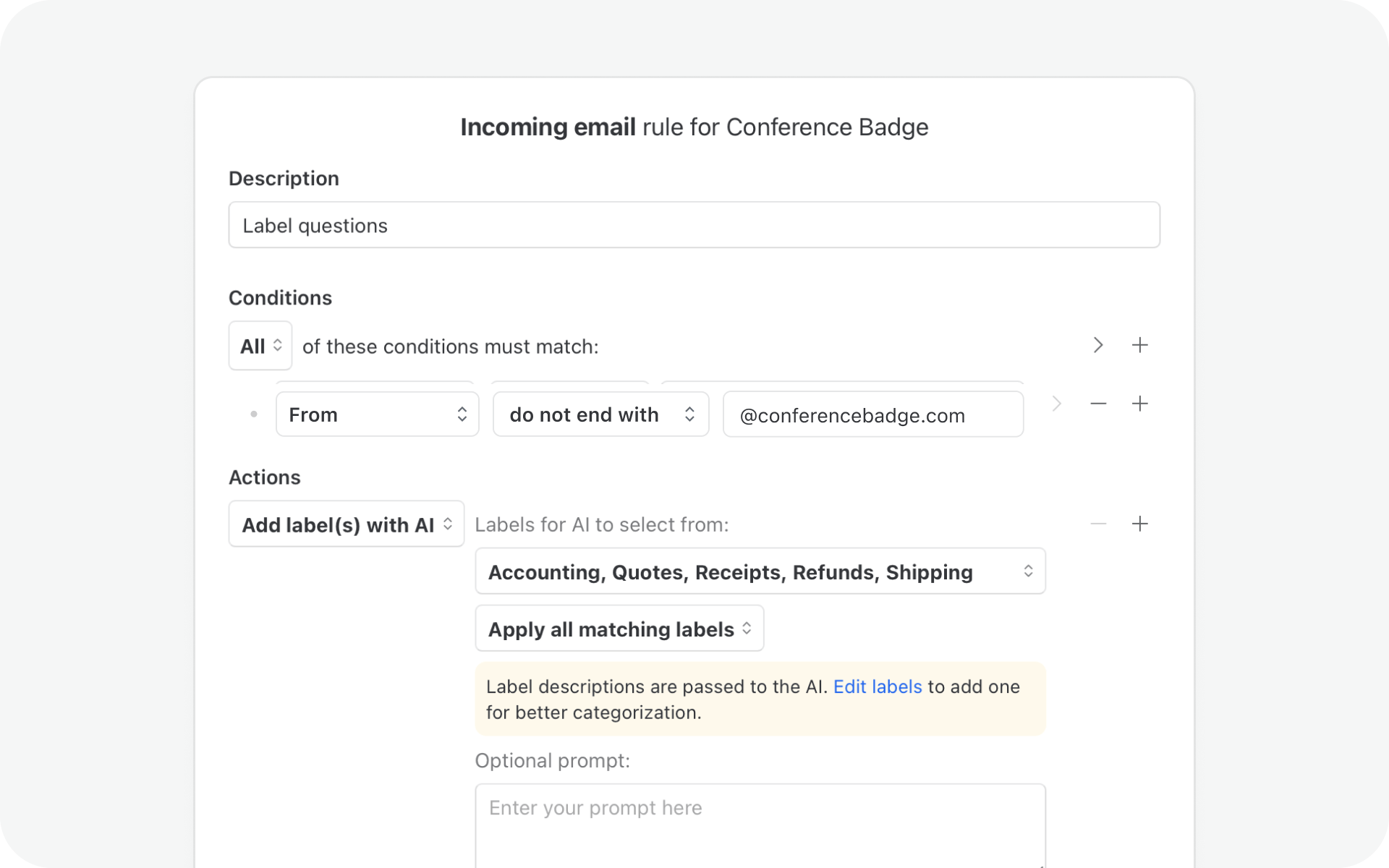
We’ve completely re-imagined how tasks work in Missive. You’ll now find dedicated views that brings together all your tasks into one place.
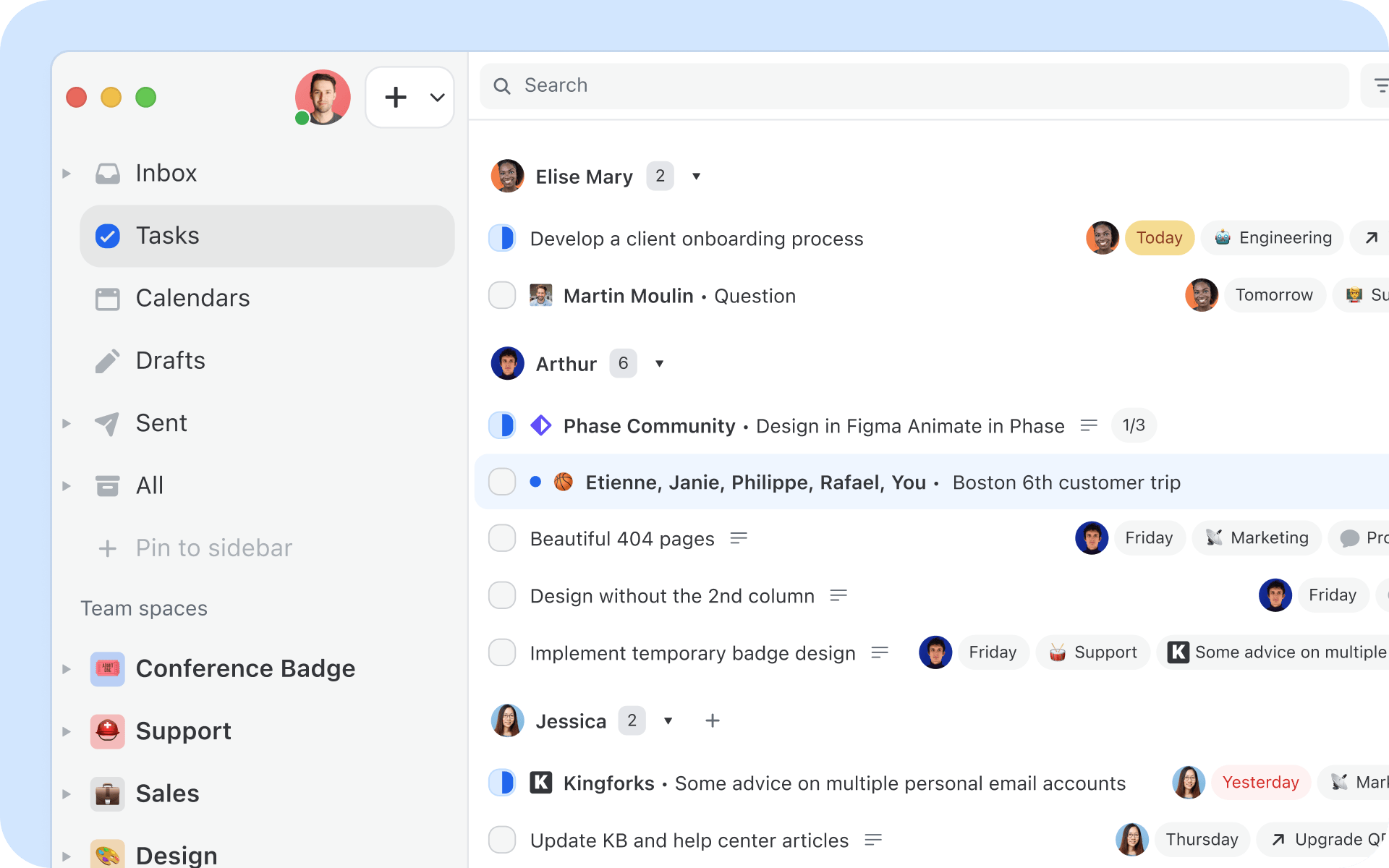
We added search and filter options to make it easier and more efficient to find the information you need. Filters with a specific date range, domain names, only conversations with attachments, etc.

See all files and attachments from any conversation in one unified view. Cleaner thumbnails, category-based organization, and Quick Look with keyboard shortcuts make everyday tasks faster.

Taking a well-deserved break? You can now set up automatic replies for your personal accounts right from your out of office status, no need for a rule.
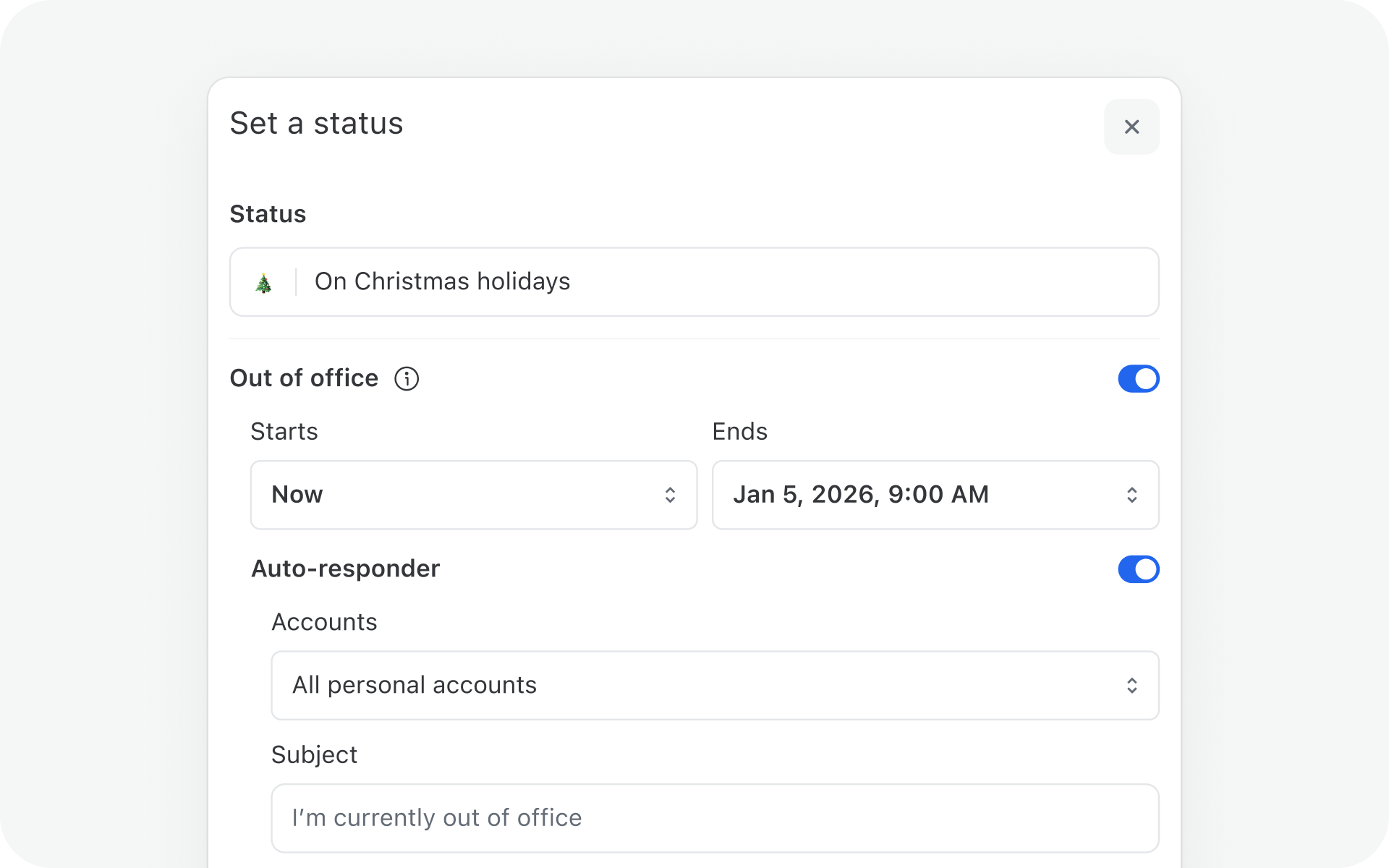
No more forwarding long threads or stitching together feedback from different tools. Guest Access lets you bring people outside your organization, like an accountant, contractor, or client—directly into specific Missive conversations.

You can now toggle your Drafts and Sent mailboxes to show only the conversations with messages you personally created or all the ones from your colleagues, making it easier to focus on your own work.
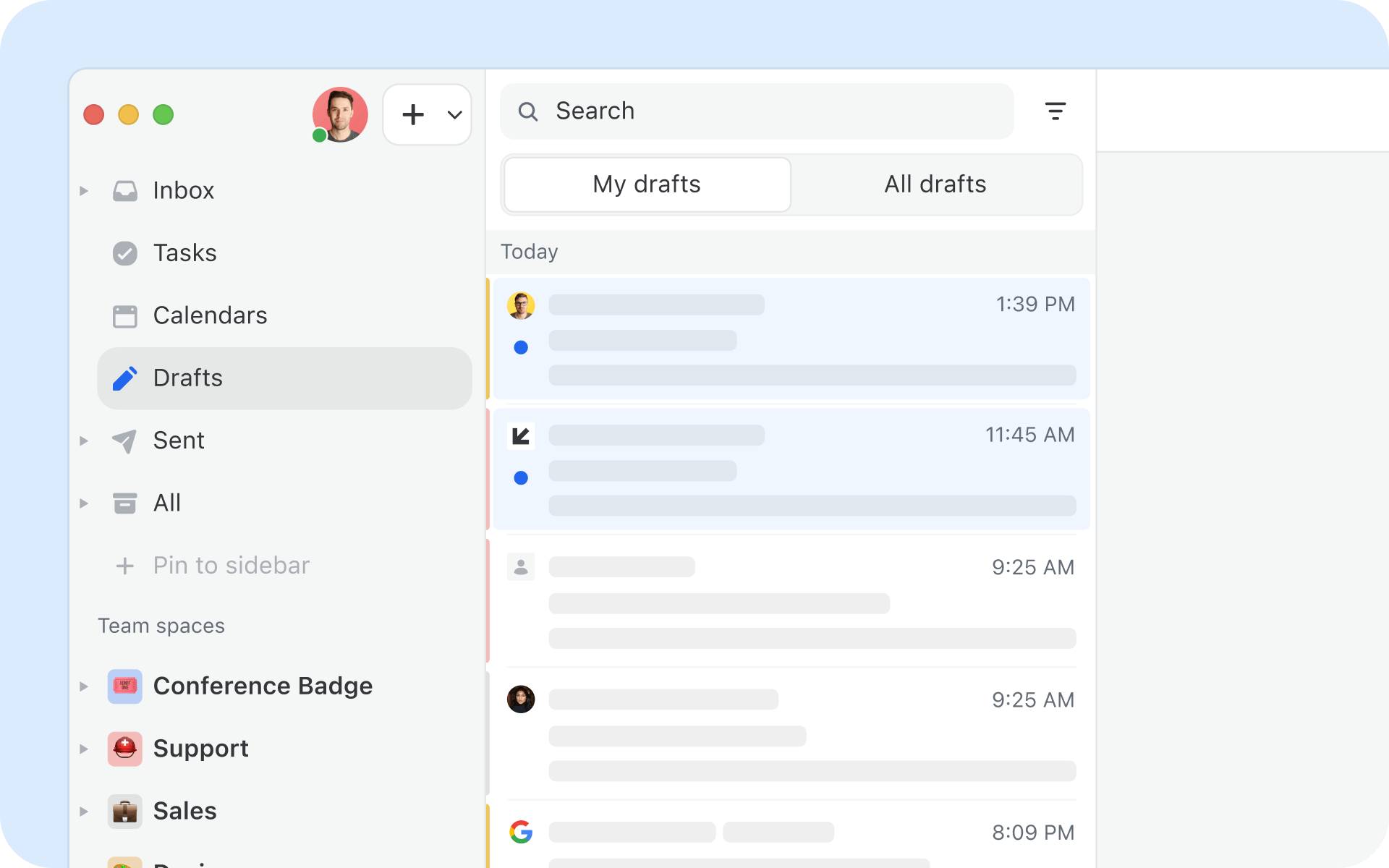
We redesigned our signup and onboarding flow to better guide new organizations through their first steps, with clearer hand-holding around creating a team and connecting a first shared account.
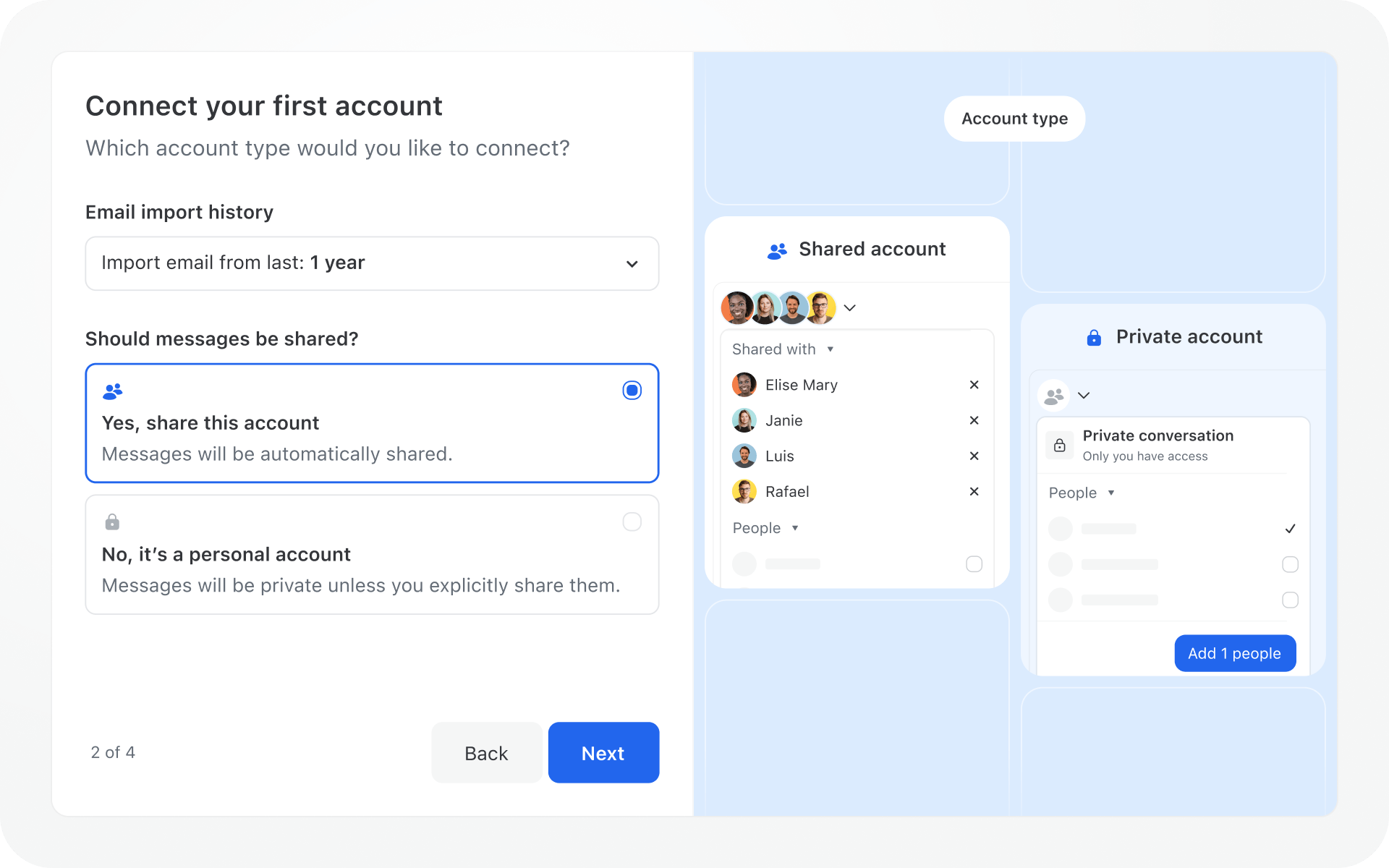
A new way to organize your teams. Every team has now a dedicated space in the sidebar, and every member will see the right elements depending on their role in the team. Quickly access your team’s inbox, Tasks, and Chatroom from the same place.
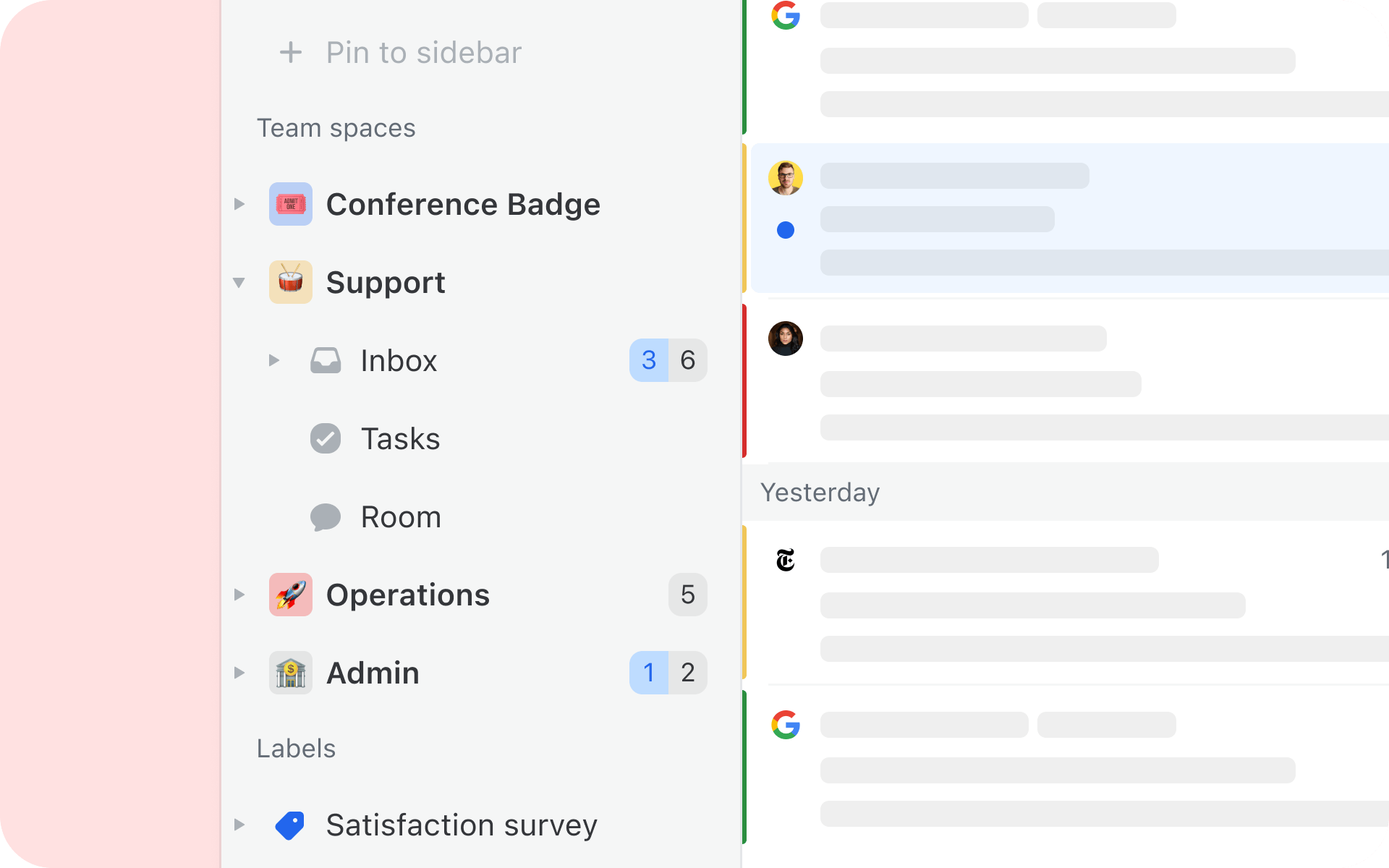
Native support for WhatsApp Business. No need to add a WhatsApp account via a third-party provider anymore, import directly from Facebook Business Manager.
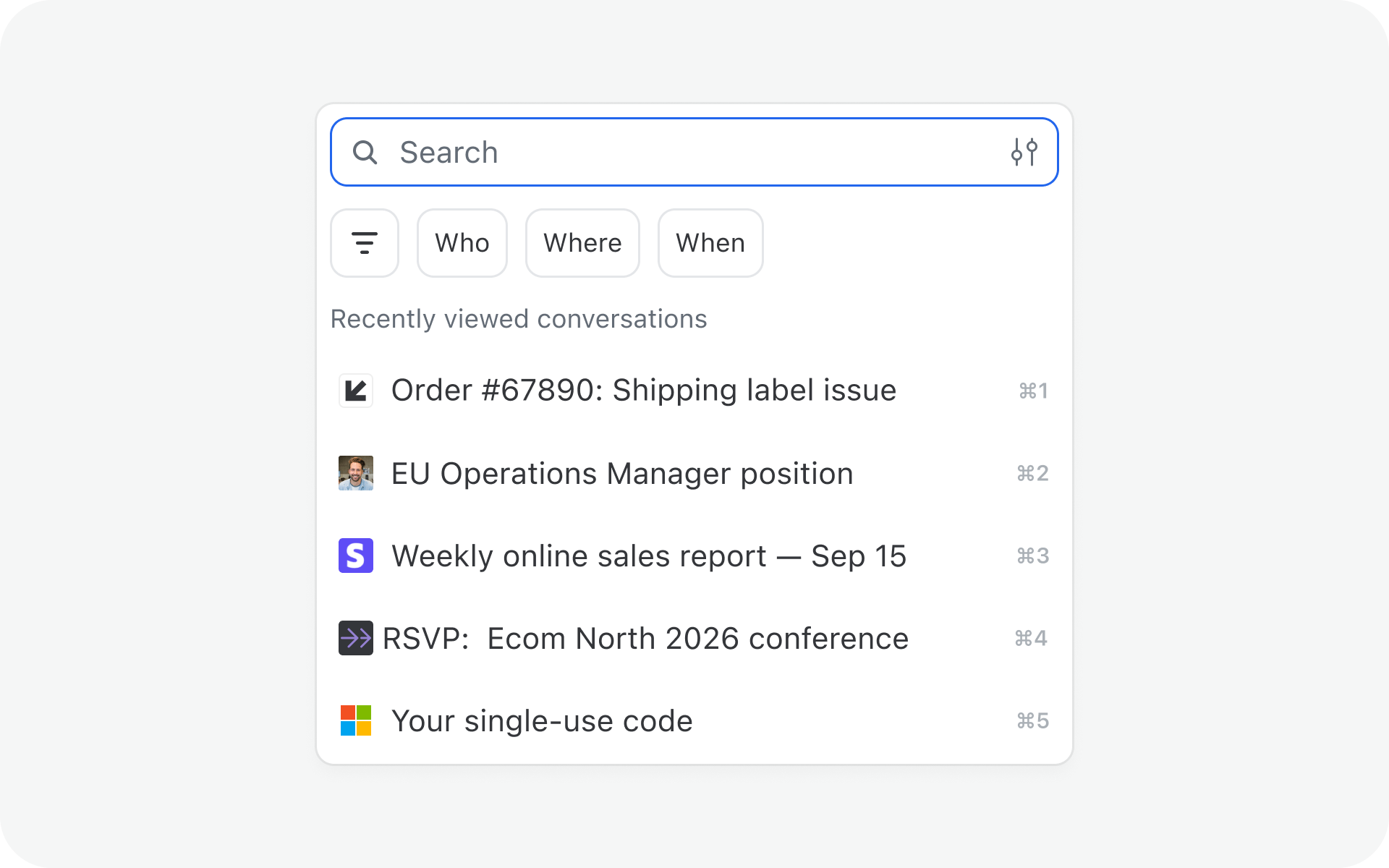

As always, we'll be regularly shipping improvements and posting them on our changelog. We can't wait to show you what we're cooking up in 2026 already.

October 1, 2024
A Decade of Lazy Marketing
A look back at the marketing efforts that fueled Missive's growth over the past 10 years.
When talking about Missive, I often dropped this bomb:
— We never did any marketing.
Well, looking back, it’s a lie. Or let’s just say that it’s an understatement.
Or maybe I was being lazy and not recollecting the many small things we did.
Now that the Missive team is growing fast (read more), I realized, you must tell your team the complete story to equip them with success.
I’m writing this for our future Head of marketing. It’s a list of all of the things we did marketing-wise for the last ten-ish years. As you can see, not so much.
To me it's a testament that, yes, if you build something that people like, they will find you.
Now, imagine with a marketing team...
Note: We got our first customer on Jul. 20, 2016 and we are now at ~$500k USD MRR eight years later.

1. First homepage, at this point Missive was free to use beta. 2015

2. We have a Blog we updated sporadically. 2015 - 2024
3. Multiple ProductHunt launches. 2015-2023

4. A Brief History of Email Apps. - A failed attempt at creating valuable content. Was fun to do, but was a miserable failure. 2015

5. Twitter - Hello Word 2015

6. Email cold outreach to a few people we admired to get feedback and validate the product. No more than 50 emails total were sent. 2015

7. Second homepage and the release of our paid plans. 2016

8. Twitter - I monitored conversations about competitors, email clients, etc. and mentioned Missive in replies. 2016-2023

9. Nailed basic SEO vitals. 2016-2024

10. Open sourced EmojiMart component, now used by big startups (e.g. Figma!). It's a big driver of traffic and backlinks. 2016-2024

11. Attending the Inbox Awesome conference in NYC, the conference was for email marketers, not our target audience. Here is a picture of me on a panel about how to make people open and read your email newsletters. I had 0 clue what I was doing. I attended two years in a row because we like the title "Inbox Awesome" 🤣. 2016-2017

12. Getting both our desktop and mobile javascript apps featured on the App Store and writing about it. This established us as a legitimate player in the email client space. 2017

13. Published VS competitor landing pages, to this day, these are our most valuable content. 2016-2024

14. Developed integrations with popular SaaS (Asana, Salesforce, Aircall, etc.). This created nice co-marketing opportunities like being featured in their app/integration store. 2019-2023

15. Third homepage (current one). 2020

16. We deprecated a really popular feature, read tracking, we explained our reasoning in a blog post. This was an important decision, it helped defined our company culture and product direction. It mostly created churn for solo-user customers.
17. We hired consultants to do SEO + write content. We did with two firms, both times the firm owners were paid Missive users. In both instances we paid $10k/month and the experiment went on for around six months. Six months is not a lot in the SEO world, but each time, both we and the consultant learned that writing good content on an app like Missive is really hard and can't be done by pay-to-hire-content-writers. 2022 & 2024
18. We ditched Google analytics, for privacy reasons, read more. I'm still not so sure about this one, it does feel like we did some privacy-posturing. Now, this might be a potential friction for our future marketing team. We have no plan to re-visit this at the moment.
19. We created a homemade affiliate program. 2022 - 2024

20. MRR milestone blog posts + Hacker news traffic 2021-2024


21. We created many case studies to showcase how Missive is used by people in different industries. Those were pushed on LinkedIn and X.2020-2023

22. We sent a total of forty newsletters, all were a summary of our progress pushing out the content of our changelog. 2016-2024

23. We offer weekly webinars potential customers can attend to learn more about the product and each webinar offers a dedicated Q&A at the end. Those webinars have been a great success, specially for people coming from other competitors looking for a validation that the switch to Missive is a good decision. 2020 - 2024

24. We attended our first trade show in an industry where we find some of our bigger customers, logistic companies. I wrote an article about our experience. 2024

25. We got serious with G2 and other review sites and started earning multiple customer reviews and earning multiple badges. 2024

26. All co-founders did couple of podcasts & interviews over the years. (1, 2, 3, 4, 5, 6, 7, 8, ...) 2016 - 2024
27. I developed our product metric pipeline with Segment and Mixpanel. This will be useful for the future marketing team. 2024

This list is really a testament of how small our team was and how focused on the product we were. We were lucky enough those small initiatives created enough traction to where we are today. Having said that, reading it again, it shows unequivocally how amateurish our marketing efforts were.
It's time to bring expertise and structure, our marketing efforts should be as good as the quality of our product. And thus, we are looking for a Head of Marketing. If you are interested, please reach out (email).